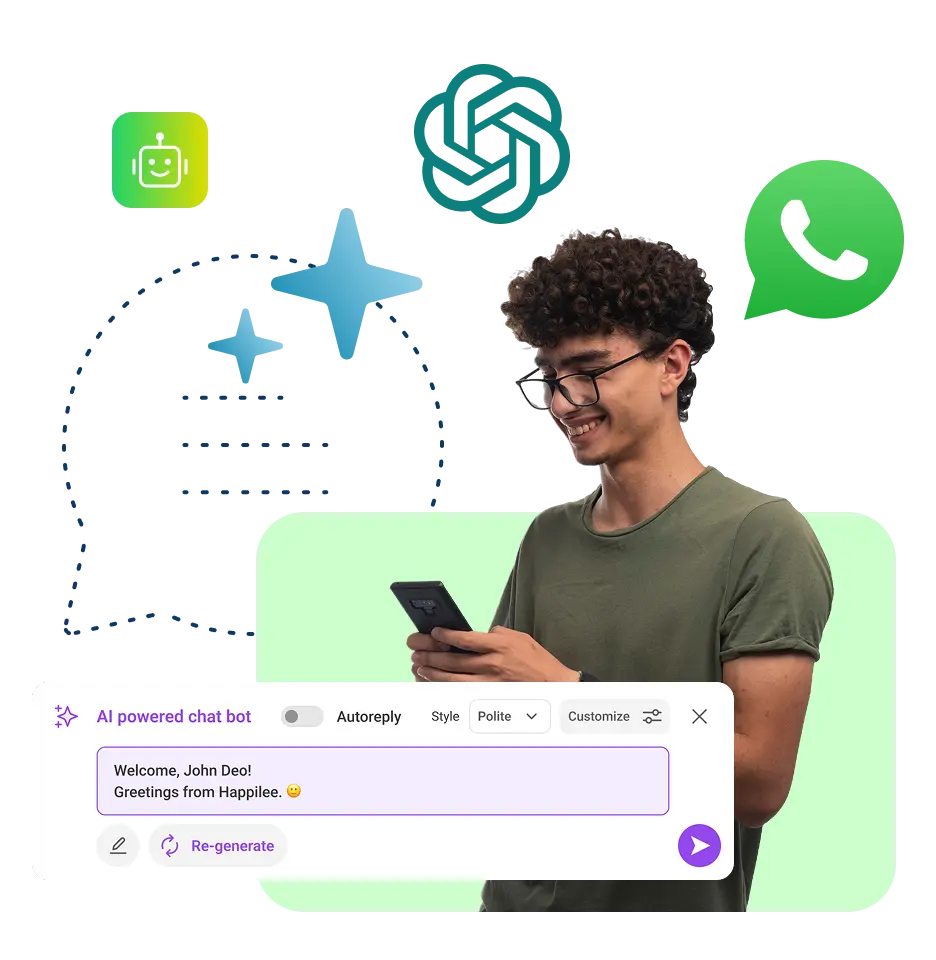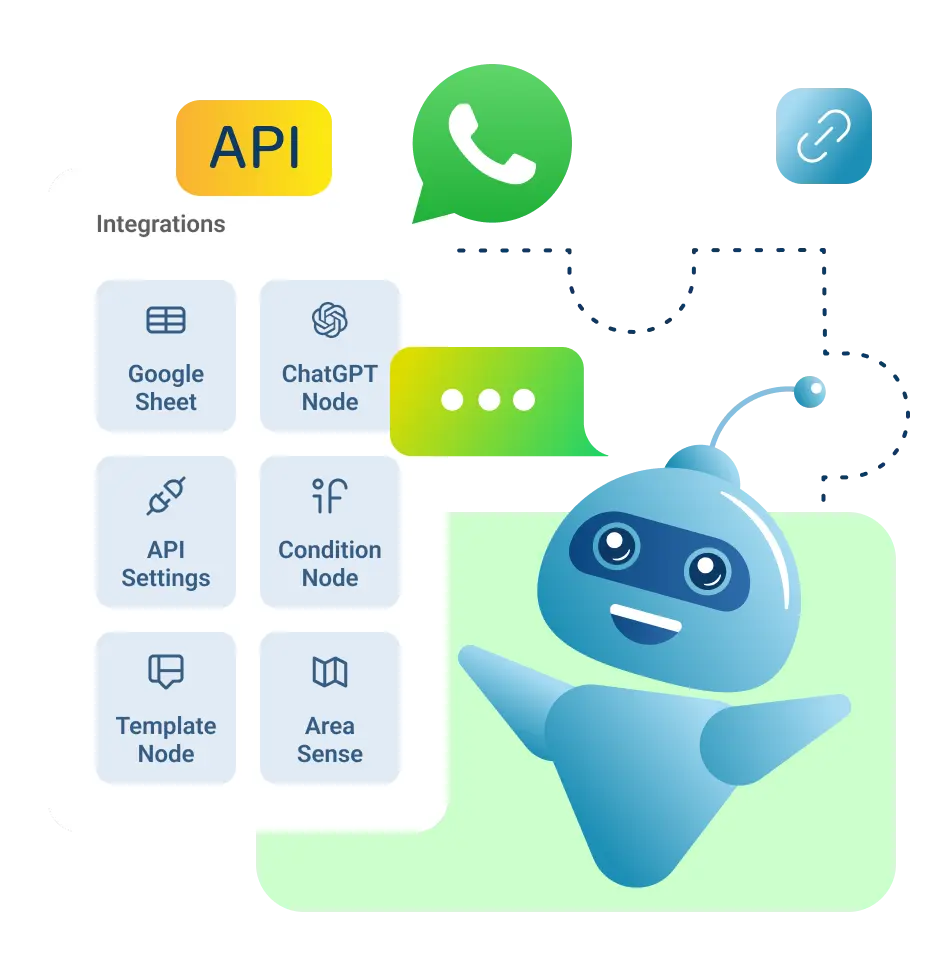Enhance Customer Support with WhatsApp Chatbot
Respond to customers instantly and effortlessly, allowing you to focus on your business to the next level.


Instant Replies, 24/7 Support
Automate customer conversations and provide instant answers even outside business hours.

No-Code Chatbot Builder
Easily create chatbot flows with a drag-and-drop builder — no coding or tech skills needed.

Smart, Scalable, and Secure
Powered by the official WhatsApp Business API for reliable, secure, and scalable communication.
Start Your Free Trial of WhatsApp Chatbot Today
Experience faster, smarter customer support with Happilee’s no-code WhatsApp chatbot. No credit card needed!
ChatGPT Integration
Power Up Your WhatsApp Chatbot with AI Intelligence
Take your customer conversations to the next level with Happilee’s ChatGPT-powered WhatsApp Chatbot. With just a single click, you can integrate ChatGPT into your bot — no coding or technical setup required.
This smart integration allows your WhatsApp Chatbot to understand natural language, respond with human-like accuracy, and personalize each interaction based on context. Whether it’s answering FAQs, assisting with product recommendations, or handling complex queries, the combination of Happilee and ChatGPT delivers an unmatched customer experience.
With Happilee’s WhatsApp Chatbot + ChatGPT, you’re not just automating replies — you’re building intelligent, meaningful conversations that improve engagement, boost satisfaction, and drive business growth.

No-Code Setup
Build and Launch WhatsApp Chatbots with Just a Few Clicks
With Happilee’s no-code visual builder, setting up your WhatsApp Chatbot is as easy as drag, drop, and deploy — no coding or tech expertise needed.
Create smart, automated customer engagement workflows in minutes using pre-built templates, quick replies, and rich media. Trigger personalized messages based on user actions like signups, inquiries, purchases, or support requests.
Whether you’re sending updates, answering FAQs, or guiding leads through a journey, Happilee helps you save time, boost productivity, and streamline customer communication — all within WhatsApp.

Bot Integrations
Seamlessly Connect Your WhatsApp Chatbot with Your Favorite Tools
Integrate your Happilee WhatsApp Chatbot with CRMs, payment gateways, Google Sheets, and more — no hassle, no coding.
Whether you're managing leads, syncing customer data, or automating tasks, our smart connectors make it easy to send and fetch data across platforms. Keep your workflows smooth, your responses accurate, and your business running efficiently with Happilee’s powerful bot integrations.

Seamlessly Connect WhatsApp with Happilee
Connect WhatsApp with Happilee to build chatbots, grow your subscriber list, and automate customer messaging.






































































































